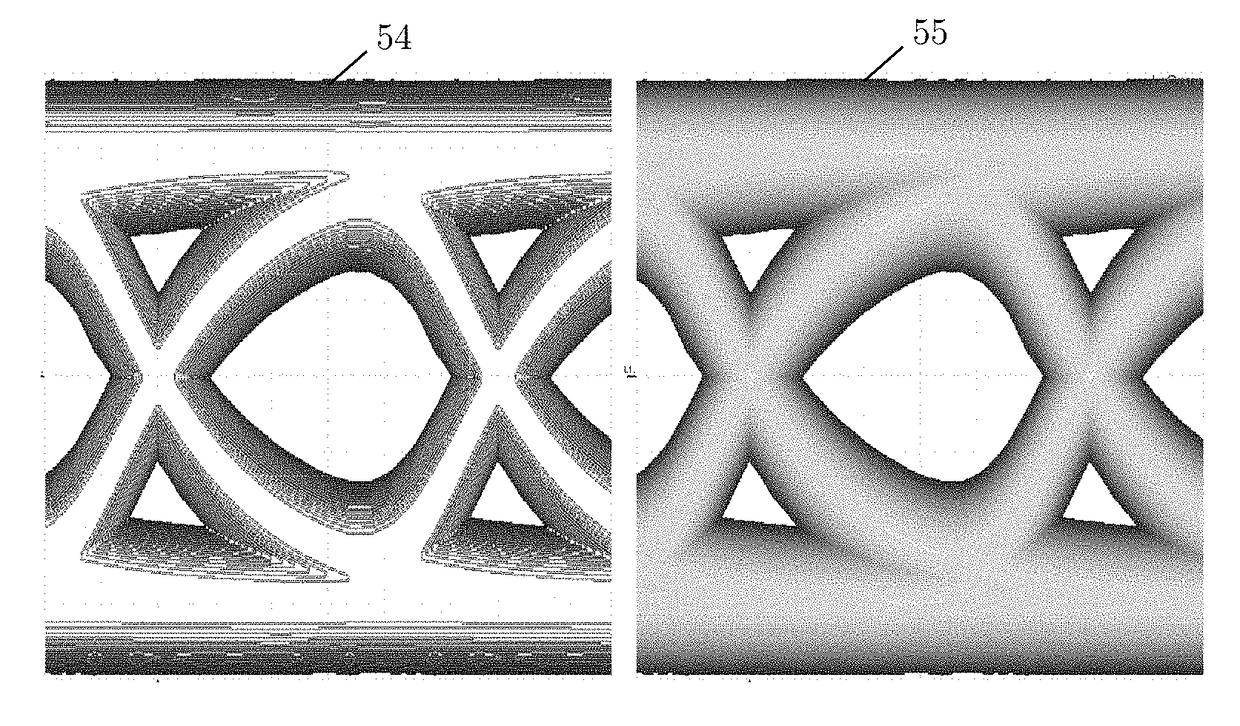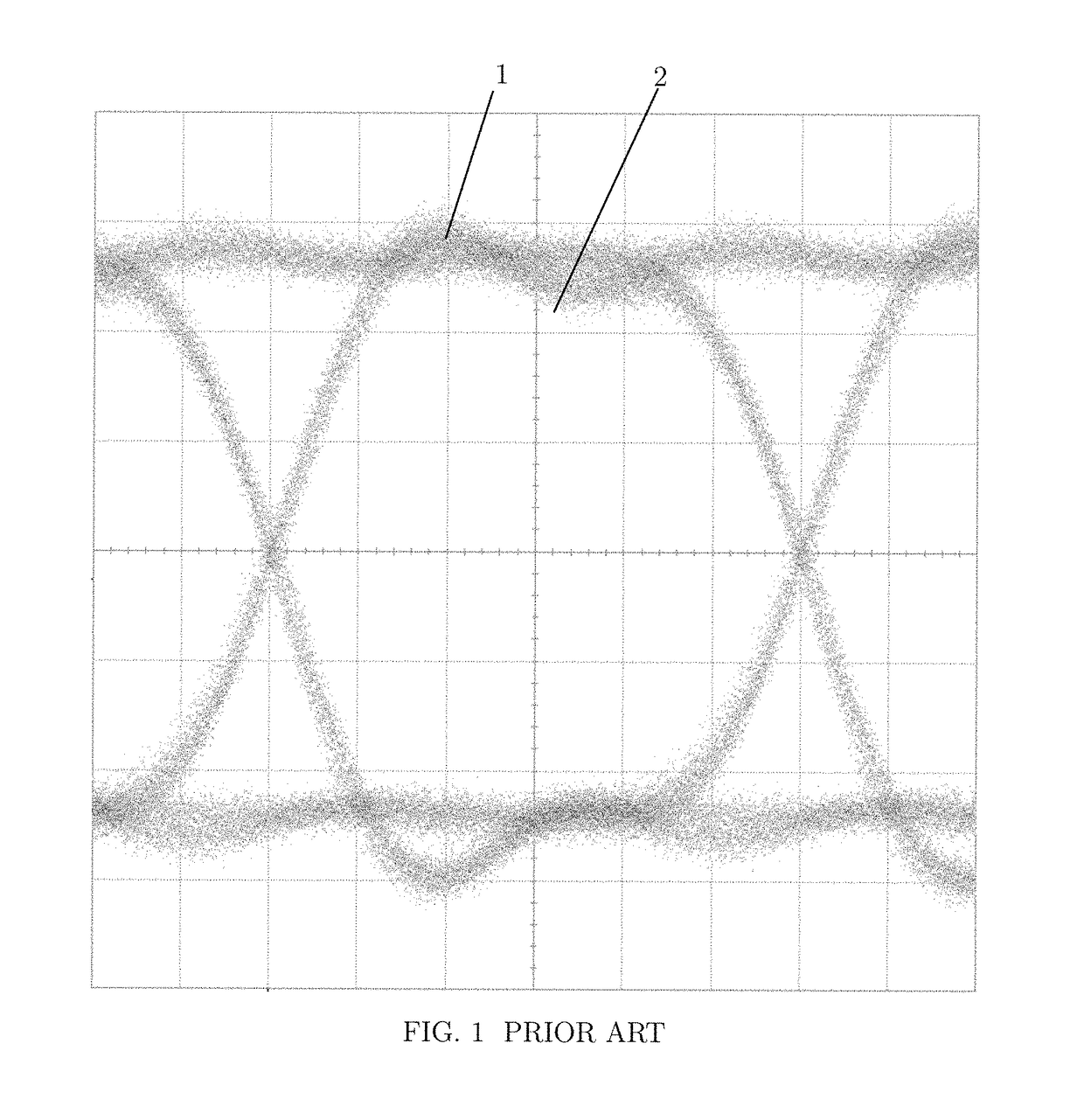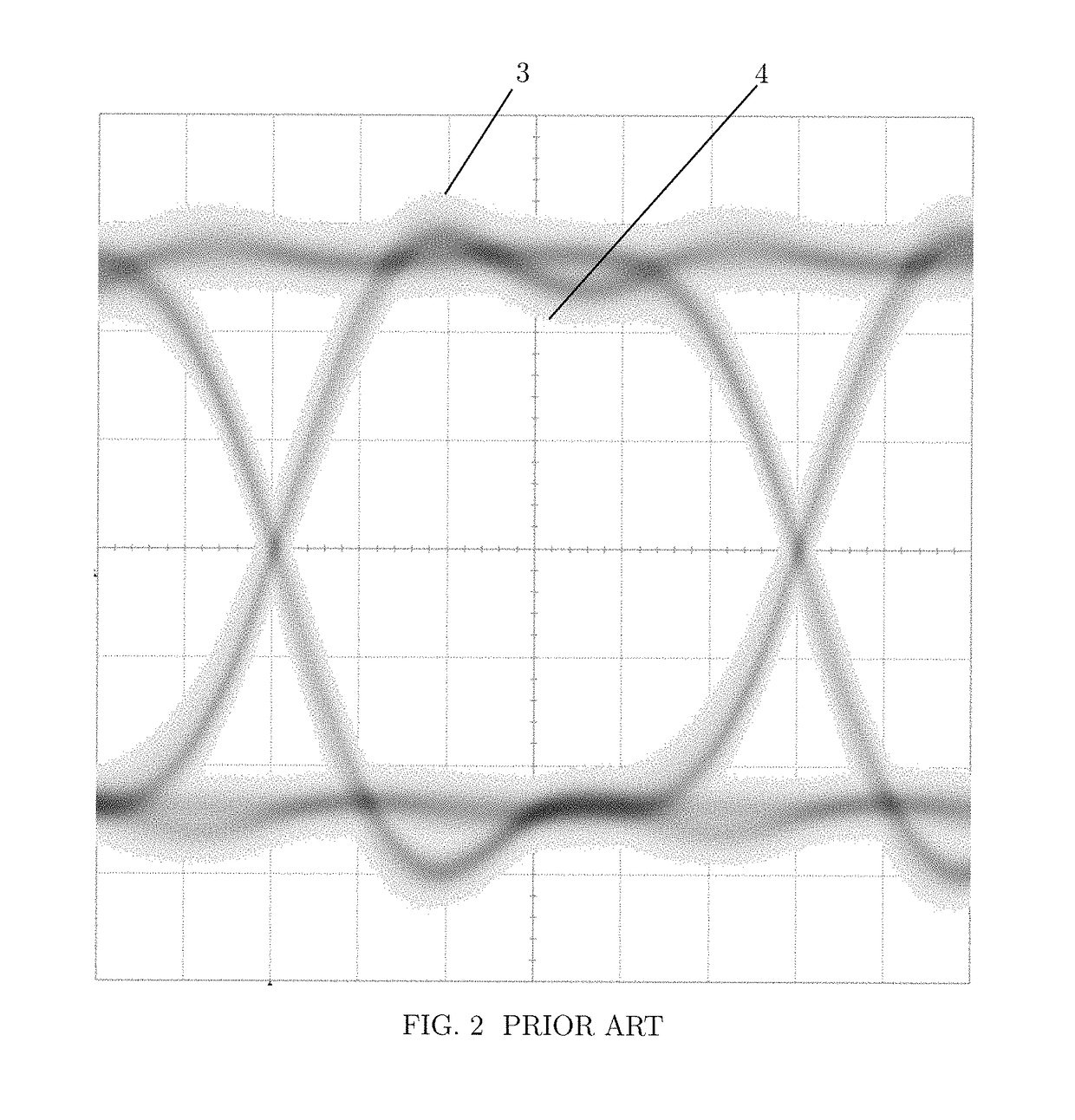Noise analysis to reveal jitter and crosstalk's effect on signal integrity
a noise analysis and crosstalk technology, applied in the field of signal integrity analysis, can solve problems such as underexploitation of the area, data channel malfunction, and increased nois
- Summary
- Abstract
- Description
- Claims
- Application Information
AI Technical Summary
Benefits of technology
Problems solved by technology
Method used
Image
Examples
Embodiment Construction
[0048]For the purposes of this application, the procedures for acquiring digital waveforms, subtracting them if they are differential (i.e. much as the implicit electronic “receiver” would effectively subtract the differential analog counterparts), the detection of transitions for either clock or data, clock data recovery (CDR), digital resampling and are all understood as procedures well known in the prior state of the art. As such these methods do not require further detailed descriptions.
[0049]The three basic steps of a particular embodiment of the preferred embodiments are shown in FIG. 3. Here we see a first step [5] consisting of the acquisition and analysis of waveforms to produce a database of histograms followed by a second step [6] consisting of the analysis of the database of histograms to produce a 2D PDF object [33], a 2D CDF object [34] and a set of mean values followed by a final step [7] consisting of the generation of displays from the 2D CDF object [34], 2D PDF obj...
PUM
 Login to View More
Login to View More Abstract
Description
Claims
Application Information
 Login to View More
Login to View More - R&D
- Intellectual Property
- Life Sciences
- Materials
- Tech Scout
- Unparalleled Data Quality
- Higher Quality Content
- 60% Fewer Hallucinations
Browse by: Latest US Patents, China's latest patents, Technical Efficacy Thesaurus, Application Domain, Technology Topic, Popular Technical Reports.
© 2025 PatSnap. All rights reserved.Legal|Privacy policy|Modern Slavery Act Transparency Statement|Sitemap|About US| Contact US: help@patsnap.com



